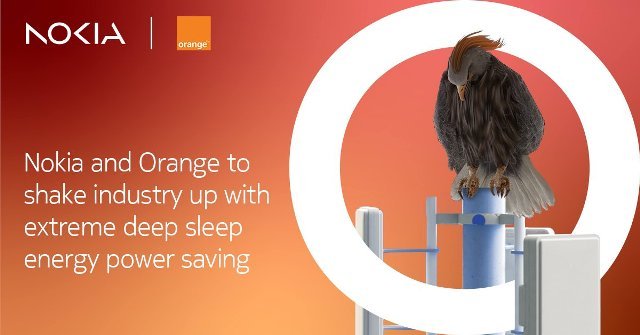Nokia has unveiled its innovation – the ‘extreme deep sleep’ mode in a groundbreaking move aimed at enhancing energy efficiency in mobile networks.

Orange will be deploying this innovative solution from Nokia during the second half of 2024. Orange, a leading telecommunications provider with strong presence in Europe and Africa, aims to leverage the extreme deep sleep mode to optimize energy consumption across its mobile network infrastructure to reduce Opex.
The key feature of this mode, aptly termed “zero traffic, zero Watt,” is its ability to detect periods of low network traffic and subsequently deactivate specific hardware components within selected radio units. This strategic shutdown not only conserves energy but also drastically reduces energy consumption, estimated to lower radio unit consumption by a remarkable factor of eight.
Nokia’s solution extends beyond hardware adjustments. Leveraging software embedded within Nokia’s Habrok radio units and the MantaRay energy solution, which employs artificial intelligence and machine learning, the deep sleep mode takes energy optimization to unprecedented levels. By disconnecting additional hardware subsystems, this mode surpasses previous deep sleep solutions, contributing significantly to energy conservation.
The importance of energy efficiency in the telecommunications industry cannot be overstated, with energy costs representing a substantial portion of operational expenses for network operators. Notably, the radio access network (RAN) alone accounts for approximately 80 percent of all mobile network energy consumption.
Arnaud Vamparys, CTIO of Orange Europe, highlighted Orange’s ambitious goal to reduce CO2 emissions by 45 percent by 2030 compared to 2020 levels, as outlined in their strategic plan, “Lead the Future.”
Tommi Uitto, President of Mobile Networks at Nokia, reiterated the company’s dedication to innovation and sustainability. He emphasized Nokia’s commitment to continuously improving the energy efficiency of its technology and AirScale radio access portfolio, citing the collaboration with Orange as a testament to their shared vision.
